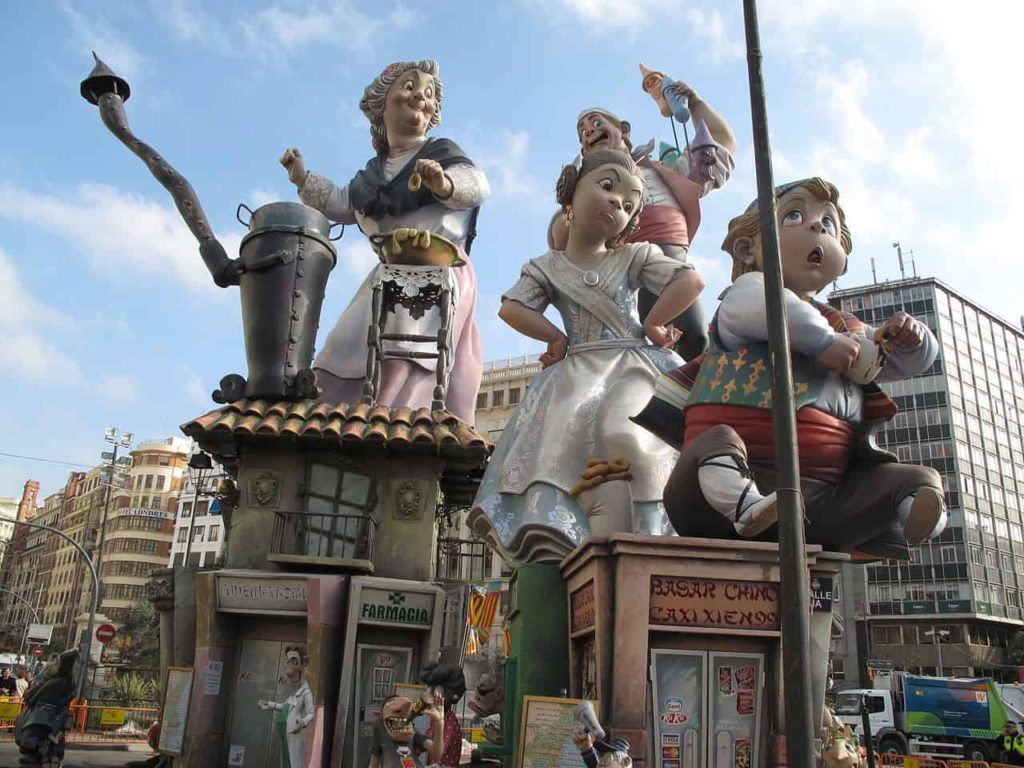From the 1st to 19th March, València is overturned by Fallas celebrations, a festivity that combines tradition, satire and art which shouldn’t be missed for anything in the world. Read on to learn where our passion for fire and fun comes from and you’ll be ready to enjoy Fallas like a Valencian.
ORIGIN OF THE FALLAS.
The origin of las Fallas comes from the old carpenter’s tradition who, when celebrating the arrival of spring on 19th March, used to burn pieces of wood (parots) that were used to prop up their lights during the winter.
To this bonfire they gradually started to add old belongings and rags, which gave the wooden structure a human-looking aspect, until they became the ninots that we know today. The Valencian sense of humour soon gave the irony shown in the ninots which is maintained at present.
The Fallas celebrations have evolved into temporary works of art which, in some cases, cost millions of euros.
19 DAYS OF ACTION FOR ANY TASTE
The passion of the Fallas lovers for their celebration has filled the Fallas week with thousands of things to do: traditional (and not so traditional) music, tonnes of gunpowder, emotive religious acts, paellas in the street… Enjoy Fallas with the 5 senses, you must be looking forward to it already!
Mascletà, from 1st to 19th
Our passion for fire is only comparable to our passion for gunpowder. And mascletà is proof of that.
The name of the act come from “masclet”, the type of fireworks that explode with a loud noise when the Fallera Mayor declares “Senyor pirótecnic pot començar la mascletà” (“Mr. Pyrotechnic, the mascletà can start now”).
To watch this spectacle of sound you should head to Plaza del Ayuntamiento at 2pm, any day from the 1st to the 19th March. And remember to keep your mouth open a little to avoid damaging your ears when it reaches 120 decibels!
The Plantà, 15th March
The night of the 15th March is full of activity. The Fallas commissions work in shifts because all the monuments that are set up in Valencia must be fully finished by the morning of 16th. That is the day that the judges award the best ones and choose the ninot indultat (pardoned figure), the only figure to be saved from the burning.
Flower Ofrenda, 17th and 18th March
All the Fallas commissions of Valencia parade through the city from their neighbourhood to the Plaza de la Virgen for a flower offering to the Virgen de los Desamparados, patron saint of Valencia. The act takes place from 4pm until the night, with bunches of flowers that become part of an impressive 15-metre high structure representing the Virgen’s cape.
Visiting the square after the 2 days of ofrenda is an olfactory experience which is worth it, we recommend it!
The Cremà, 19th March
All the Fallas, small and large, must be burned on the 19th. Although it’s a shame, seeing how the flames reduce these monuments to ash is an artwork in itself. So, put on some comfortable shoes and prepare for the cremà route: at 10pm the small monuments start to burn, and at midnight the big ones go up in flames, except for the 1st prize-winner which is burned at 12.30am. The Fallas celebrations end when the monument at Plaza del Ayuntamiento is burned, at 1am.
Iberinbound Travel, iberinbound@iberinbound.com incoming travel agency, offers incentives in special destinations. We are leaders in Group tours if they are Educational, Students, Leisure, ad-hoc groups, Shorex, MICE. They say that everyone should come to Fallas at least once in their life, although we’ll warn you now, with everything that there is to see and do sure to want to experience it again!

